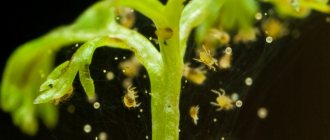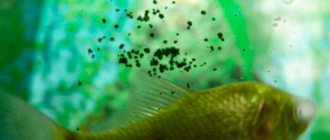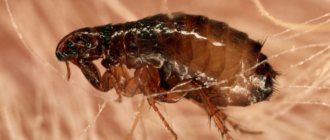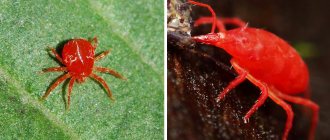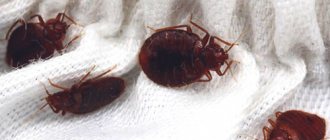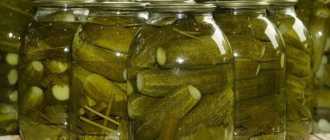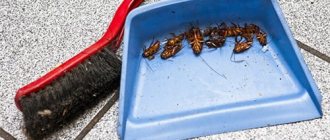What do spider mites like?
It is difficult to name a plant that the spider mite would not like.
He loves cucumbers most of all, but will not disdain other melons, legumes, tomatoes, eggplants and any vegetables. If there are no plantings in the garden, the pest attacks weeds. The colony will multiply on unharvested grass and, when you plant cucumbers in open ground, the whole mass will attack your favorite delicacy. In the garden, the tick attacks fruit trees and shrubs. If there are no fruit or berry crops, ornamental shrubs and hedges will do. Each type of insect has its own favorite plants, but in the absence of the necessary crops, they will settle on any tree, bush or grass. In the spring, before the leaves begin to bloom, inspect all fruit trees and shrubs. If you see deformed buds, know that they have spider mites.
In a warm apartment, a mite can attack any indoor plant. The pest especially loves roses, dieffenbachias, and ornamental citruses. If you do not notice the pest in time, it can destroy the entire green interior decor. First of all, weak and diseased plants that are located in shaded corners suffer. Ticks do not like ultraviolet rays - in the summer, try to open windows and take flowers out into the air. From the sun, the bushes will become stronger and healthier, and the insects will try to move to a more favorable place for them.
Why am I fighting spider mites in the greenhouse?
Spider mites are small, invisible to the naked eye, but a very dangerous enemy of the gardener. Its spread is especially harmful in greenhouses - at a comfortable temperature and humidity, and an abundance of succulent food - foliage - the pest is very active. The rapid reproduction of mites and the existence of pests in the greenhouse often lead to the death of plants.
It affects more than 190 species of wild and cultivated plants. The spider mite feeds on cell sap, weakening and depleting the plantings. Among my favorite foods are peppers, cucumbers, pumpkins, eggplants, and melons. Arachnids prefer to settle in the cozy conditions of greenhouses rather than in open ridges.
I begin to fight the “invisible enemy” at the first signs of damage - the appearance of small light, yellowish dots near the central vein of the leaf. Then on the tops you can notice thin cobwebs - a quickly drying secretion secreted by the pest. The following symptoms tell me about the “housewarming” of spider mites in the greenhouse:
- The appearance of white spots on the leaves (especially young ones).
- Detection of microscopic living creatures on the inside of the leaf.
- In case of large-scale damage, the entire tops turn yellow and the plant dries out.
- In particularly advanced cases, the dead plant is completely entwined with thin cobwebs. You can see the swarming ticks even without magnifying instruments - there are so many of them.
I recognize the pests themselves only with a magnifying glass by the following signs:
- The eggs are very small, round, yellowish in color.
- The larvae are pinkish “spiders” with 6 legs.
- Nymphs are yellow-green or brownish creatures with 8 legs.
- Female adults are bright red in color. You can only notice it in the fall.
- Male adults are ticks measuring no more than 0.5 mm. Their body can have either a pale yellow or a rich red color. They differ from other ticks by two spots on their sides.
Having made sure that it is the spider mite that has settled in my greenhouse, I, without delay, begin to eradicate it. And in the future, I don’t forget about preventing the appearance of the pest.
spider mites on plants
How to deal with the pest?
First you need to find the insect. It looks like an ordinary tick. A sure sign of residence is the appearance of many whitish spots. If the number of individuals is large, then all available leaves are covered with a white film, which is called cobweb. Damaged leaves are dry. It is difficult to see the pest due to its tiny size and body color, which camouflages it with the shade of the crown, making it invisible to the naked eye.
Typically these colors are brown, green, dirty light green, light yellow. But a peculiarity is that the females that stay for the winter have a red or brown body color.
Their lifespan is less than one month. During this short period, they are engaged in active reproduction - a female can lay several hundred eggs in her lifetime. Hatching of the offspring occurs after 3 days, if there are no obstacles to this. If any were discovered, then the offspring do not hatch for five years, remaining alive, whole, and healthy. It’s hard to imagine, but all this time the eggs are waiting for positive conditions for birth in the soil, soil, or even between cracks in window frames or in chips of a pot.
This greatly complicates the fight against harmful insects. Finding the cause of the appearance is also very difficult. Most often, the distributor is store-bought flowers. This is why it is so important to place the new culture in a separate room, leaving it for about two weeks. After this time, conduct a thorough inspection for the formation of a whitish coating and, if none is found, you can add it to all other plants.
Folk remedies
To get rid of a parasite such as spider mites, it is not necessary to buy expensive chemicals, since the pest problem can be solved using folk remedies.
To combat parasites you can use:
- Herb tea. A remedy for parasites can be made from herbal tea in an amount of 1 liter, mixing the liquid with one tablespoon of cinnamon and cloves (ground) and two tablespoons of Italian herbs. After the liquid boils, you need to remove it from the heat and allow it to cool to room temperature, and then add two tablespoons of garlic (dried or pressed). Cool the solution completely and strain through a filter or cheesecloth. After this, you need to pour a little detergent and mix thoroughly. Using a sprayer, apply the solution to the leaves of the infected plant once every three days for 2 weeks.
- Ultraviolet. To destroy mites and strengthen the plant’s immunity, it is enough to illuminate the leaves for several minutes a day.
- Plant plants with a strong smell, such as garlic or geranium, next to the flowers. However, this remedy is only suitable for prevention; an infected plant cannot be saved in this way.
- Fumigation of an infected plant with tobacco smoke.
The means at hand are not as effective as chemical ones and only help in the first stages of infection, but they are excellent as preventative measures.
How to treat plants
If a spider mite has been detected, then the first step is to wipe the leaves on both sides with a solution of tar soap and water. But it is best to soap each leaf separately, forming foam. It should be processed carefully, trying to keep the entire crop intact. After washing, the affected specimen is covered with film or a plastic bag and left for a day. After the time has passed, wash off all the soap with warm water.
It is advisable to perform the procedure in the bathroom. This action will help if the number of insects was small. Even if the web has stopped forming, the manipulation must be repeated three more times a week to ensure that pests and eggs are destroyed.
It is necessary to moisten the leaves with water at room temperature a couple of times a day and subject them to a thorough inspection. Window frames and window sills should be washed with hot water using a disinfectant. Don't forget about the surrounding plants. It is important to ventilate the room frequently.
What to do in advanced cases? Carry out the same wash using tar soap as described above. After it you need to spray with potent drugs - Intavir, Fitoverm, Karbofos. It is necessary to wipe the windows and window sills by adding one of the suggested products to the water.
The treatment procedure can be simplified by placing a small bowl of garlic cloves, chopped into small cubes, near the affected plant. Turpentine is used instead. The pot should be thoroughly coated with tar. After which the plate should be covered with a bag along with the culture and left for two to three days.
Prevention of spider mites
There are a number of recommendations that will help prevent pests:
The purchased plant should not be immediately placed next to others and must be quarantined. It should last 3-4 weeks. To be more sure, it will be useful to treat the leaves and stem with acaricide several times during quarantine. Purchased or home-made soil mixtures must be treated. For example, you can bake them in the oven, pour boiling water over them, or steam them in a water bath. It all depends on the selected soil. It is necessary to ventilate the room as often as possible, and during hot weather, carry out frequent watering and spraying. To prevent spider mites from appearing in the garden, it is recommended to regularly remove weeds, which are an excellent springboard for the proliferation of pests
It is also important to remove plant debris, for example, old dried bushes.
Prevention of spider mite infestation of indoor plants
To protect flowers, minimize the risk of infection and not waste energy on treatment, it is better to perform the following preventive actions:
- Exercise caution when purchasing new plants or replanting existing ones.
- Conduct regular inspections for the presence of parasites.
- Disinfect the substrate, expanded clay for drainage, purchased in the store, with a solution of potassium permanganate or bake on a baking sheet (baking sleeve) in the oven for 40 minutes at a temperature of +180 °C. Another way is to steam the soil in a sieve with a layer of gauze in a water bath for 20 to 90 minutes. After the procedures, it is important to add yeast or other bacterial fertilizer.
- Treat with special fungicides such as Fitosporin, Alerin, Agat, Baktofit.
- Carry out a 2-3 week quarantine for newly arrived specimens.
- Give the greenery a periodic shower.
- To humidify the air by spraying from a spray bottle, however, it is best to purchase a humidifier.
Spider mites are a dangerous pest that damage a wide variety of indoor plants and cause trouble for gardeners. However, by following simple rules, performing preventive actions and carrying out consistent, systematic treatment, you can reduce the risk of infection to a minimum.
General information about the pest
Several generations of mites live in the web woven by spider mites. They reproduce very quickly. Individuals become adults after 10-20 days from the moment of laying eggs.
Low temperatures and high air humidity have a negative impact on the reproduction of spider mites. Also, under such conditions, the period of development of already hatched larvae may slow down. If climatic conditions improve, then a sudden mass infection is possible. In addition, spider mites move very quickly from one plant to another.
The color of spider mites is variable and depends on a number of factors. Most often, ticks are yellowish, brownish, or greenish. May have dark colored spots on the sides of the body. Non-feeding wintering females are usually rufous or red in color. Males are somewhat smaller than females and have a more elongated body.
Females emerge from fertilized eggs, and males emerge from unfertilized eggs. Tick larvae, unlike adults, have three pairs of walking limbs. After the first molt, the larva turns into a nymph, and already has 4 pairs of walking limbs, like adult ticks. The eggs are round in shape. Immediately after laying, they are whitish or yellowish, almost transparent.
As the embryo develops, the eggs become cloudy and yellowish. The rate of embryo development is very dependent on temperature. So, at +15 °C the egg stage lasts about 15 days, and at +30 °C only 2-3 days. The total duration of one generation of these pests (from egg to egg) also depends on temperatures and ranges from 30-36 to 7-8 days. This must be taken into account when drawing up a processing schedule.
In autumn, a significant proportion of nymphs turn into overwintering non-feeding females. Some of them migrate from food plants in search of wintering places. Moreover, some move down, while others seek shelter in the upper part of the premises. So completely treating your plants does not guarantee that you will get rid of all pests in your home.
At high summer temperatures, some females stop feeding and also migrate in search of shelter until the end of the extremely hot season.
Best Chemicals for 2021
When using drugs from this group, it is important to strictly follow the dosage and number of treatments in accordance with the attached instructions. Chemical agents that destroy ticks are divided into two groups:
- insectoacaricides;
- acaricides.
To effectively get rid of the pest, you should alternate products with different components in the composition. Many products cease to perform their function after repeated treatment.
If you need to use chemicals, you must follow a number of simple but important rules:
- During use, wear long sleeves, gloves and a hat to protect skin, mucous membranes and hair. The best place for spraying chemicals is a balcony, loggia.
- For indoor flowers, choose products with toxicity class 3-4. Highly toxic substances are only suitable for outdoor plants.
- In case of serious infection, it is necessary to carry out not one, but 4 treatments with an interval of 5-7 days.
Examples of chemicals and their use are presented in the table:
| Name | Protection time (days) | Peculiarities |
| Akarin | 8-15 | Provides assistance within 48 hours. Suitable for roses, violets and orchids. |
| Aktara | 14 | It does not have an unpleasant odor, but is considered ineffective against ticks. |
| Aktellik | Toxic, it is better to spray outside. Do not allow it to get into the ground. | |
| Anti-mite | 7-9 | Defeats different types of pests. |
| Apollo | 60-90 | Sterilizes adults. |
| Bi-58 | 21 | Prevents the emergence of new colonies of parasites. |
| Nissan | 50 | The effect is visible after 11 days. |
| Neoron | 10-40 | Can be used at any humidity and air temperature. |
| Omite 30 and 57 | 14 | Available in different dosages. |
| Oberon | 20-25 | Destroys all stages of insects: eggs, larvae, adult females, except males. |
| Sunmite | 30-35 | The impact on masonry is minimal. |
| Skelta | 80-85 | The death of the pests occurs within a week. Requires re-spraying after 8 days. |
| Fitoverm | 20 | Low toxicity, but re-treatment is required. |
Due to the fact that all mites are similar in structure, flower growers use drugs used in veterinary medicine to treat animals, for example, Neostomozan.
For treatment to be effective, it is better to alternate the use of acaricides and water procedures. Plants in large tubs, as well as specimens with curled leaves or curly dense crowns, for example, ficus, are best dipped into a bucket with diluted products, greens side down, for 1-2 minutes.
Sometimes on forums they suggest using Dichlorvos. This should not be done, the product does not help against ticks, but when sprayed in an apartment it is harmful to human health.
Folk remedies for spider mites
Despite the effectiveness of chemicals, many gardeners and summer residents prefer to use folk remedies for spider mites, the main advantages of which are safety and accessibility.
Decoctions and infusions
Herbal decoctions and infusions are widely used in pest control.
- Garlic (2 heads) is finely chopped, poured with water (1 liter), and left for 5 days in a dark place. The resulting infusion is filtered, the same amount of water is added and used to spray infected plants.
- It is good to remove parasites with mustard, the smell of which spider mites really do not like. 60 g of dry powder are diluted in 1 liter of water and infused for 3 days.
- Onion peel (100 g) is filled with water (5 l), infused for 5 days. After which the infusion is filtered and used to treat plants affected by mites.
- Dry or fresh alder leaves (200 g) are poured into 2 liters of water and boiled over low heat for 30 minutes. After which the broth is infused for 12 hours, filtered and used for spraying.
- Dandelion leaves and roots (100 g) are poured with hot water (1 l) and left to infuse for 3 hours. The strained infusion is used in the same way.
Soap solution against spider mites
A soap solution (20 g of soap per 1 liter of water) gives an effective effect in the fight against spider mites. It is better to use regular laundry or green soap to prepare the solution. It is necessary to wash the leaves on both sides with a cloth soaked in soapy water, avoiding contact of the composition with the roots of the plant.
To spray flowers and garden plants, you can also use sulfur-tar soap (100 g of soap per 10 liters of water). The procedure is carried out 2-3 times a week.
To combat spider mites at home, use a solution of hydrogen peroxide, which is prepared at the rate of 2 tbsp. l. (3%) product per 1 liter of water. Spraying is carried out once a week for a month, which allows you to destroy the entire harmful family over time. To treat the soil, use a weak solution of potassium permanganate.
Ammonia
Ammonia has similar properties. The solution is prepared in a ratio of 1 tbsp. l. for 10 liters of water. The resulting composition is used to treat the leaves on both sides, which will not only remove mites, but also saturate the plant with nitrogen.
When starting to study recipes on how to fight against spider mites on indoor plants, it is better not to use dubious and toxic products. To begin with, you can carry out a simple washing of the foliage and surrounding area with soap solutions. Be sure to treat the stands, window sill, ceramic saucers, and pot. A strong solution with laundry soap or dishwashing liquid will completely destroy the arthropod enemy on the washed surface.
Medical 10% ammonia is a common remedy for various garden evil spirits. The popular ammonia helps against spider mites if you prepare it in the correct dosage, protecting the body with a simple cotton-gauze bandage for safety. Effective concentration – 1 tbsp. spoon/bucket of water.
For a long time, gardeners have tried to fight annoying insects with garlic preparations, because this plant is always at hand and treatment is cheaper for the owner than buying an expensive, but not always effective acaricide. Even a schoolchild can prepare such a drug, because it is not toxic, and the process of mixing homemade ingredients is extremely simple.
We use garlic against spider mites:
- You will need up to 170 g of cloves.
- Use a garlic press or rolling pin to chop the purified material.
- Pour the pulp with a liter of boiling water.
- Infusion time under the lid is 5 days.
- The saturated solution takes on a dark color.
- Pour the infused product into a spray bottle, diluting the liquid 1:1.
Almost the cheapest recipe that helps fight the microscopic parasite is generally made from waste. Onion infusion against spider mites can be infused on dry peels prepared in advance, storing the required amount in the attic or pantry. We prepare the product, following strictly the points of the old instructions:
- you need up to 100 g of husk;
- To fill this ingredient, 5 liters of water are required;
- infusion time – 5 days;
- strain;
- We fight spider mites.
Where do spider mites come from on houseplants?
There are a great many sources of spider mites appearing on house plants . We list both the most basic and the most unexpected, at first glance, routes of infection:
Most often, the tick “arrives” in the house on the leaves of purchased indoor plants . All flower growers unanimously repeat: if you bought a new flower in a store or from hand, do not immediately place it on your plants. Place the newcomer in quarantine on a separate windowsill, or better yet, immediately wash the crown of the plant with laundry soap and carry out preventive spraying with any pest control agent.
The second most “popular” route of infection is flower bouquets . If you brought a bouquet of your garden flowers or were given one for a holiday, try to place the vase with flowers away from indoor plants.
In third place, spider mite infection through the ground . Experienced gardeners never prepare planting mixtures in the same room where the plants are located. Spider mite eggs can sleep peacefully in the ground for up to 5 years, waiting for favorable conditions. Any soil, forest garden soil or store-bought soil, must be calcined in the oven, because it may contain many dangerous bacteria, fungal spores and pest eggs.
The fourth way to become infected with mites perfectly explains how they “out of the blue” appear on plants. Attention! Spider mites can fly! Of course, they do not have wings, but the thin webs produced by the glands of the tick can serve as an excellent parachute, allowing them to soar with the wind over vast distances.
A little about the pest
It is quite difficult to remove spider mites. After all, it is not always possible to notice a small, 0.2 to 1 mm, brown or greenish-gray insect with the naked eye, not to mention its eggs. But the extent of the damage caused by the pest is quite impressive, since the spider mite feeds on plant cell sap. An enzyme secreted from the salivary gland destroys the chloroplasts of plant cells. This is why the leaves begin to turn yellow, dry out and fall off over time. As a result, plants are stunted and sometimes even die.
Most often, bushes and deciduous trees are susceptible to pest attacks: mites settle on cherries, apple trees, and plums. They often live on coniferous plants. Cucumbers, seedlings, melons, cotton, ornamental plants in greenhouses and open ground can also suffer from massive attacks of plant parasites. Roses are the pest's favorite target. Among indoor plants, the spider mite is very fond of yucca and orchid; it is also found on ficus, cactus and lemon (ornamental).
However, before looking for methods to combat a plant parasite, you need to know what conditions are favorable for its spread, as well as at what temperature the spider mite dies. As a place of residence, arthropods select dry and warm places (the most comfortable for them is an air temperature above +27 degrees). When air humidity rises, they experience depression, so to prevent indoor flowers from becoming a delicacy for the pest, they must be sprayed regularly.
Effective methods of controlling spider mites
If you identify the pest in time, you can count on a successful outcome. But the problem is that the parasite is very small, and also very prolific. The insect's body may merge with the leaves or stems of the plant, which complicates the search process. The easiest time to recognize this parasite is in winter, since females acquire a reddish-brown hue.
When starting the fight against a tick, it is important to know which drugs and which actions can be destructive for the insect. If a tick is identified, then you need to focus on an integrated approach in the fight against this parasite.
For example:
- If there are not so many larvae and adults, then you can resort to simple mechanical removal by wiping the accumulation areas with a rag soaked in hot water.
- If the pest is still small, then various decoctions of greens, vegetables, herbs and flowers, the aroma of which the tick cannot tolerate, can help.
- When a sufficient number of mites have already bred on the plant, biological products can help in the fight.
- If the plant is literally strewn with parasites, then it is better to use potent chemicals that will certainly destroy the larvae and adults.
The infected plant is immediately removed from its place and quarantined.
Biological products
Biological products are compounds that are considered low-toxic, so they are safe for plants and humans. But if there are animals in the house that like to chew leaves, then they may suffer. After the first treatment, such products destroy adults and larvae, but eggs and females that can hide in the soil survive. To be sure to destroy the parasites, it is necessary to carry out about 3 treatment procedures every 5 days.
Help against spider mites:
- Vermitek.
- Fitoverm.
- Aktofit.
- Akarin.
- Mites.
- Agravertine.
SUPER SIMPLE REMEDIES FOR SPIDER MITES!!!!
Watch this video on YouTube
Chemicals
If mites multiply very quickly and biological products, and even more so traditional methods, do not cope with their task, then it is better to resort to the use of chemicals, so-called acaricides. Some types of mites have already managed to adapt to the action of chemicals, so you have to use 2 or even 3 different drugs. In any case, an effective remedy can always be found.
The use of chemicals requires the use of personal protective equipment, along with certain rules. For example:
- Wear long sleeves, a hat and gloves.
- To treat indoor plants, it is permissible to use drugs of toxicity class 3-4. More toxic products are intended for outdoor use.
- Before spraying, the root zone is closed so that the chemical composition does not get on the roots. Alternatively, you can use a plastic bag.
- Processing of the plant is carried out strictly according to the instructions. If the flower is seriously affected, then more than one such treatment will be required, but possibly all four, to ensure that the pest is destroyed.
The following drugs have this effect:
- Sunmite.
- Floromite.
- Flumite.
- Apollo.
- Oberon.
Folk remedies for spider mites
If the parasite has just begun to multiply and has not had time to organize numerous colonies, then you can get by with folk recipes of various compositions. The method is worthy of attention, since it allows several treatments to be carried out without harm, both to the flower and to others.
You can prepare the following compositions:
- Onion infusion. To do this, you need to take a medium-sized onion and cut it into strips or cubes, then pour boiling water over them. After 4 hours, the infusion is filtered, poured into a spray bottle, and then the leaves are sprayed with this solution.
- Infusion from potato tops. Green raw materials are crushed and poured with 1 liter of boiling water. After 4 hours the solution is ready for use.
- The use of celandine. To prepare the infusion, take 1 liter of boiling water and pour it into 2 tablespoons of green or dried celandine leaves. After 4 hours the solution is ready for use.
- Yarrow decoction. You need to take 1 liter of boiling water and 100 grams of yarrow. Boil the solution for 3 minutes, let it sit for 4 hours and it can be used, but before that it should be filtered.
- Dandelion infusion. You need to take the leaves and roots of the plant, chop them and take 3 tablespoons, after which the raw material is poured with boiling water. After 4 hours, the solution is filtered and used for its intended purpose.
Caring for indoor roses. Spider mite. Tetranychidae
Watch this video on YouTube
Agrotechnical method
Compliance with agricultural technology will allow you to grow vegetables in a greenhouse without fear of pest invasion. Using agrotechnical techniques, we use knowledge about the preferences of spider mites.
For example, spider mites do not like high temperatures and humid air. But these are the conditions that cucumber plants prefer. If you spray the plants several times a day, the pest will not settle in uncomfortable conditions. The use of a fogger gives good results.
In autumn and spring you should dig the soil deeply. Plant debris should be removed from the greenhouse immediately after the end of the season. Because spores of pathogens and eggs of pests can overwinter on them. Remove weeds in a timely manner, at the initial stages of development.
Chemicals on guard
Chemical plant protection products in vegetable beds are used only as a last resort. If neither biological nor folk measures help, and the spider mite does not leave the greenhouse, “heavy” artillery is used. Trade offers a wide selection of chemicals for processing:
- ExtraFlor Doctor Green;
- Anti-mite;
- Bitoxibacillin;
- Iskra M;
- Craft;
- Clipper;
- Talstar.
When applying agricultural practices using chemicals, you must follow some rules. They are quite simple and compliance will not cause harm to either the plant or the person:
- Before starting chemical treatment, it is necessary to moisten the soil abundantly.
- To make the insecticide stick better, add potassium soap to the prepared solution.
- When spraying plants, try to avoid contact with plant roots. Treat the soil around the crop without sparing the chemical mixture.
- Be sure to follow the waiting periods indicated for each drug.
In order not to miss any material that interests you, subscribe to our website newsletter! It’s easy to do this, and you’ll get enormous benefits from subscribing.
Fitoverm is a safe product
Fitoverm occupies a special place among chemical plant protection products. This drug is harmless to people and animals. There is virtually no waiting period. But it has two disadvantages: a relatively high price and repeated frequent use to achieve a noticeable effect. But, you see, the safety is worth it.
It is important not to forget that after a single treatment it will not be possible to completely destroy the tick. Chemistry is also powerless against eggs. The treatment must be repeated after seven to ten days, replacing the drug. Repeat the spraying procedure 4-5 times. If you approach destruction following all the rules, using control means in combination, you can get rid of spider mites forever.
Special attention! It is not advisable to use chemicals during fruit ripening. But if processing is unavoidable, do not eat vegetables if they come into contact with chemicals.
Why is it dangerous for plants?
As you probably know, spider mites feed on plant sap, sucked from punctured leaves and stems. It is not picky in its choice of food and settles on both cultivated plants and weeds, in greenhouses and outdoors, on indoor and outdoor crops.
Adult mites and eggs are spread by animals, humans, and the wind; in addition, it is easy to buy infected planting material and not notice it. The colony develops very quickly, since in a year the spider mite is capable of producing from 12 to 20 generations in a house or heated greenhouse and 3-4 generations outdoors.
Leaves pierced and sucked by mites first become covered with white dots (at the sites of bites), then turn pale, dry out and die. A large colony in a few days can destroy the entire plant, if we are talking about a house flower, a strawberry bush or an annual plant. Of course, it will not be so easy for mites to destroy a large tree, but they can cope with this in a couple of seasons.
In addition, puncture sites become open gates for infections, which are often carried by ticks themselves. Their most common “companion” is gray mold, but other infectious diseases also occur.
In addition to this main reason why ticks are dangerous, there are several more:
- it carries viral and fungal diseases;
- spreads gray mold spores;
- makes the plant vulnerable to disease.
Before the insects have time to multiply exponentially, it is immediately necessary to apply various methods of combating larvae, eggs and adults of spider mites.
The following signs of mite damage to plants are distinguished:
- Brown spots that look like holes made with a needle.
- Yellow or light green dots.
- Falling flowers and leaves.
- Slow plant growth.
- Silvery webs between the leaves.
- The presence of small insects on the underside of foliage that look like red or yellow moving dots.
- A large number of mites on the web is a sign of a large mite infestation.
- The presence of black grains that are easily separated from the plant - mite excrement.
The spider parasite loves greenhouse crops with thick, fleshy leaves. Plants such as ficus, hibiscus, and fuchsia are most susceptible to its attacks.
What is the danger of the pest?
It is clear that spider mites, due to the nature of their feeding, are an undesirable guest on plants. If measures are not taken promptly, you can not only lose the harvest, but also the entire planting. By sucking juices from leaves and growing shoots, mites inhibit the development of plants and then lead to their death.
Under favorable conditions, the population grows exponentially and captures more and more new territories. At the same time, the pest may not be limited to one type of garden crops, but move on to others.
Even if you seem to have managed to stop the spread of ticks, this does not mean that the danger has passed. The puncture sites on the surface of leaves or shoots are essentially open wounds.
Bacteria and fungal spores quickly penetrate into such places, finishing the “dirty” job begun by the mites.
Due to the activity of pests, for example, the following may develop:
- powdery mildew;
- spotting;
- gray rot;
- rust.
Therefore, after defeating ticks, it is often necessary to use fungicidal preparations to protect against diseases.
Spider mites are especially dangerous at the beginning of the growing season; if they appear during flowering or the formation of ovaries, even if the plant was able to be kept alive, it is difficult to expect a good harvest.
Why do spider mites appear?
Common causes of spider mites:
- In summer, spider mites migrate very easily from area to area, being firmly attached to the web, they are easily carried away by the wind.
- On a garden plot it can appear with purchased seedlings of vegetables and flowers, seedlings of trees, shrubs and grapes.
- Spider mites are brought into homes with new potted plants, bouquets of flowers, or even on clothing, an umbrella, or a bag.
At temperatures below 18 degrees, ticks no longer reproduce and stop moving and feeding.
Therefore, during the hot season, you need to be very careful, wash your shoes and accessories more often, and inspect all the flowers that are brought into your house or apartment.
How dangerous are spider mites for plants?
Ticks have a sucking mouthpart and suck out plant sap, along with plastids in which the process of photosynthesis occurs. The synthesis of plastic substances in the plant stops.
Due to damage to a large number of leaves, the plant is depressed, stops growing and developing, and even dies. Oppressed plants are not resistant to fungal diseases. And the carrier of many of them is the spider mite.
Signs of spider mite infestation
The presence of a pest can be recognized by the following signs:
- A clear symptom of the presence of a mite is a cobweb that thickly entwines leaves on thin branches and is located on stems, shoots, and flowers.
- Multiple damage is noticeable on the leaves - specks, dots, thin punctures. The points subsequently merge, the tissues of the affected organ die and form large areas of necrosis.
- Affected plants look sick, depressed, and lose their aesthetic appearance.
- Sometimes mite secretions in the form of silvery or shiny stripes and spots can be seen on the leaves.
In addition, the grapes are parasitized by the felt mite, which creates dents from the inside of the leaf outwards. A white cobwebby coating is visible in the dents.
Distribution factors
Almost always, the reason for the appearance of spider mites on seedlings of garden crops is the same: violation of the rules of agricultural technology. For example, the location of seedling cups next to an array of adult plants. In this case, the pest, even if present in small quantities on an adult bush, will crawl onto a small plant and destroy it.
Other factors:
- use of unprepared soil for seedlings;
- drying out the air in a greenhouse or greenhouse;
- violation of the irrigation regime.
Sometimes the spider flare also hides on the seed. It is for this reason that it is recommended to disinfect seeds if this procedure has not been carried out by the manufacturer.
Remember that pests can hide in hard-to-reach places in the greenhouse, under window sills, in cracks in window frames. Therefore, when growing seedlings, do not forget about preventive treatments.
Flat beetles
Tenuipalpidae - or false spider mites (not to be confused by name with the flat beetle Cucujidae), of the genus Brevipalpus Brevipalpus and Tenipalpus Tenuipalpus. They are very similar in size and shape to spider mites; they also sit on the underside of leaves and move slowly. Their sizes are very small, from 0.1 to 0.4 mm.
If these images are not enough for you, you can also look at the spider mite photo.
In many species, colonies consist only of females, which hatch from unfertilized eggs. Development occurs in three stages: larva, protonymph and deutonymph. Maturation from egg to adult tick takes 12 to 24 days. The eggs of some species of flat beetles can be seen with the naked eye and appear as clusters of reddish-orange color. Larvae of flat beetles are six-legged, orange-red, translucent, nymphs are opaque, and dark spots appear on the body. Adult ticks are brown, eight-legged, and have a flattened body. Adult females live for 5 - 6 weeks, producing 6-10 generations per season. Many flat beetles have a pause (rest) of 1-2 days between moults; during this time they do not feed and remain motionless on the leaves.
The flat beetles are brown, but very small, looking like brown grains.
The puncture sites where the flat beetles are attached are dark dots.
Flat beetles do not form webs. They do not suffer from high humidity.
Plants affected by flat beetles differ in the nature of their spots. The fact is that most flat beetles have toxic saliva, which, when it enters plant tissue, causes necrosis. Therefore, brown or gray-brown spots appear on the upper side of the leaf. First small, pinpoint, 1-2 mm, then increasing in size. Leaves are often deformed, and in plants with dense, fleshy leaves (Saintpaulia, Gloxinia), the edges of the leaves begin to turn inward.
Worst of all, flat beetles are the main carriers of viruses (mosaic and ring spot). But what’s even worse is that the ideal conditions for the reproduction of flat beetles are a temperature range of 25-30°C and fairly high air humidity, at least at 70-80% air humidity they are comfortable, while spider mites at such humidity inhibit their development .
Dependence of the rate of mite metamorphosis on temperature:
- at an ambient temperature of 15°C: eggs mature in about 2 weeks, about another week for each subsequent stage: larvae, pronymphs and deutonymphs, a total of 33-36 days from egg to adult.
- at an ambient temperature of 20°C: eggs mature for about a week, about 3 more days for each subsequent stage: larvae, pronymphs and deutonymphs, a total of 2 weeks from egg to adult.
- at an ambient temperature of 30°C: eggs mature in about 3 days, about another 1.5 days for each subsequent stage: larvae, pronymphs and deutonymphs, only a week from egg to adult.
Population and species status
Photo: Spider mite
The distribution range of spider mites covers a very vast territory: all continents except Antarctica. In total, this insect lives in nature wherever the temperature does not drop below plus 4.5°C. Moreover, in protected ground (greenhouses, conservatories, on window sills), ticks can be found in the Arctic, Alaska and even in the Far North.
The spider mite is an arthropod arachnid of very small, almost microscopic size. It is a dangerous pest because its “menu” includes more than 200 species of cultivated plants. Among fruit and berry crops, it can infect almost all stone and pomaceous species, as well as legumes and melons. The mite is especially partial to cotton and at the peak of reproduction (in heat and drought) is capable of destroying entire fields of hundreds of hectares.
Reproduction in ticks is predominantly bisexual, occasionally parthenogenetic. Only fertilized females go to wintering and enter diapause; all other adults, including males, die. Development in arthropods is incomplete and, under favorable conditions, takes a very short period - up to 8 days. In different climatic zones, spider mites are capable of producing from eight to twenty generations in one year.
One of the most dangerous pests of cultivated plants is the spider mite. They are very small, multiply quickly and can cause considerable damage to plants in a short time. Among all pests in crop production, mites are the most dangerous and difficult to control, therefore natural methods of control have practically no effect on them and often it is necessary to use fungicides.
Tags:
- Eleutherengona
- Panarthropoda
- Prostigmata
- Raphignathina
- Tetranychinae
- Tetranychoidea
- Tetranychus
- Acariform mites
- Bilaterally symmetrical
- Animals of Australia
- Animals of Australia and Oceania
- Animals of Asia
- Animals of Africa
- Animals of Eurasia
- Animals of Europe
- Animals starting with the letter K
- Animals starting with the letter P
- Animals of Russia
- Animals of North America
- Animals of the Subtropical Zone of the Northern Hemisphere
- Animals of the Subtropical Zone of the Southern Hemisphere
- Animals of the Subequatorial Belt of the Northern Hemisphere
- Animals of the Subequatorial Belt of the Southern Hemisphere
- Animals of the tropics
- Animals of the Tropical Zone of the Northern Hemisphere
- Animals of the Tropical Zone of the Southern Hemisphere
- Animals of the Temperate Zone of the Northern Hemisphere
- Animals of the Temperate Zone of the Southern Hemisphere
- Animals of the Equatorial Belt
- Animals of South America
- Interesting animals
- Ticks
- Shedding
- Unusual animals
- Dangerous animals
- Spider mites
- Protostomes
- The smallest animals
- Trombidiform mites
- Cheliceraceae
- Arthropods
- Eukaryotes
- Eumetazoans
Fighting spider mites using biological products
Preparations that, when ingested with juices into the tick’s body, block its vital functions and thereby cause the slow death of the pest at all moving stages, are more preferable to killing chemicals - they are not harmful to anyone at all, except for parasites that feed on the greens that are treated with them.
- Biological products after spraying do not destroy ticks immediately - they will die within about 8 - 12 hours.
- The eggs will remain invulnerable, so a repeat cycle is needed - usually 3 or 4 times.
- The solution is prepared before spraying, a maximum of an hour, and is not stored prepared.
- The method of mixing the solution is described in the instructions and should be followed thoroughly.
Biological products that have already proven themselves to work “excellently”.
- "Agravertine"
- "Kleschevit"
- "Akarin"
- "Fitoverm"
- "Vertimek"
- "Aktofit".
Biological products are based on the biological incompatibility of individual microorganisms and spider mites, so they do not cause harm to soil, water, insects, fish and people.
Signs of plant damage
Experts call the spider mite an ideal pest. It is capable of reproducing very quickly, is omnivorous, and at the same time easily goes into diapause if conditions are not too favorable for life. Clutches left by the female and covered with cobwebs can be found on the walls of containers, on the leaves below, as well as in the ground itself. The eggs have a smooth shell. They can remain viable for several years, without dying due to unfavorable conditions, but simply slowing down their development.
If the damage is very severe, the plant will be noticeably shrouded in such a net that collects dust and excrement of these small animals. However, some varieties of the pest practically do not weave webs.
Another sign of infection are eggs, but it should be noted that they are very difficult to see. The fact is that the diameter of each is less than a millimeter, in addition, they are very light or even translucent. They are located in small groups, from 1 to 3 eggs in each, and are covered with a protective layer of cobwebs, creating the most suitable conditions for development. It takes 3 days for the larvae to appear.
This mite eats plant sap. He can get it from anywhere in the flower. Small light spots appear on the affected area; they are best seen on the leaves. This leads to a slowdown in photosynthesis and disruption of intercellular structures, respectively, their proper functioning becomes impossible.
These spots grow over time and lead to yellowing of the leaves. They dry out in small areas and also become sluggish and inelastic. A coating of cobwebs forms on top.
Finally, the last stage can be called the falling of leaves. The spots on their surface join together, the leaf blade dries out and falls off. The more pests there are on a plant, the faster they can destroy it.
Spider mite pest: description
Spider mites (lat. Tetranychidae) are a family of mites that are found everywhere, even in Antarctica. Representatives are grouped into 1270 species belonging to almost 100 genera.
Appearance of the pest:
- The tick's body length does not reach even one millimeter. Females, as a rule, are somewhat larger than males and are difficult to see without special means.
- The tick's body is soft, ellipsoidal with a convex back and smooth abdomen.
- According to its biological structure, it has two pairs of eyes, five-membered legs, 6 in young individuals, and 8 in adults.
- In the larval stage, individuals are transparent. Subsequently, the color of the ticks varies widely from light green to brownish.
- Dark spots appear on the sides of the body. These are intestinal sacs.
The spider mite feeds on leaf tissue. Mites suck out chloroplasts and form webs. There are more than 200 plants in the world to which they cause the greatest harm. The leading crops affected by this pest are grapes, soybeans, cotton and cassava.
Spider mite life stages
- Ticks reproduce in dry and hot weather, as soon as the air temperature is above 25° C and the relative humidity is below 40%.
- From 3 to 7 generations of ticks are born per year. If weather conditions are unfavorable, then ticks do not reproduce and hardly feed - this condition is called diapause.
- Eggs are laid by females little by little, in a clutch of 1-3 pieces, they are small, round, slightly flattened. In total, all clutches can contain up to two hundred eggs.
- If the eggs are fertilized by males born this year, they become females, while the unfertilized ones remain males.
- The hatching of larvae occurs on the third day after laying eggs. The larvae develop over approximately 24 hours and enter the nymph stage.
- Further development of mites under favorable conditions also occurs very quickly. In four days, nymphs of both sexes manage to go through three molts and two stages of development. After this, the individuals are considered sexually mature and are able to give birth again.
- Egg laying occurs more often in the ground, under fallen leaves, on the roots of plants, the back of leaves, and in potted culture - on the walls of pots.
How do spider mites overwinter?
Only female individuals enter the wintering stage. From late summer until next spring they are orange-red or bright red, and the males die. Pest eggs can also overwinter.
Spider mites overwinter in a state of diapause:
- on plant residues;
- on fallen leaves;
- in bee hives;
- on details of fences;
- on greenhouse structures;
- in stored garbage;
- in boxes;
- in old things.
Females can burrow into the ground for wintering to a depth of 20 cm.
What is a spider mite and how does it reproduce? Life cycle of a spider mite.
Spider mites are small insects whose size does not exceed 0.5 mm. It is very difficult to notice on a plant because with a small number of individuals, they rarely give themselves away, since they are very small and sit on the opposite side of the leaf. And even if we notice some dark grains, we most likely attribute it to careless watering and grains of soil getting onto the leaf. As a rule, the characteristic appearance of cobwebs means only one thing - there are too many ticks and they need to be dealt with immediately.
The tick reproduces very quickly: under favorable conditions, the female lays up to 250-300 eggs in 2-3 weeks, after which she dies. Favorable conditions for the development of spider mites are dryness and high temperature. The development cycle of a spider mite includes the following stages: egg, larva, protonymph, deuteronymph (in females), and adult. As a rule, from the very first stage (egg) to the adult individual it takes from 10 to 20 days, all other things being equal. So how does a mite harm a plant?
Why are spider mites dangerous?
As you probably know, spider mites feed on plant sap, sucked from punctured leaves and stems. It is not picky in its choice of food and settles on both cultivated plants and weeds, in greenhouses and outdoors, on indoor and outdoor crops.
Adult mites and eggs are spread by animals, humans, and the wind; in addition, it is easy to buy infected planting material and not notice it. The colony develops very quickly, since in a year the spider mite is capable of producing from 12 to 20 generations in a house or heated greenhouse and 3-4 generations outdoors.
Leaves pierced and sucked by mites first become covered with white dots (at the sites of bites), then turn pale, dry out and die. A large colony in a few days can destroy the entire plant, if we are talking about a house flower, a strawberry bush or an annual plant. Of course, it will not be so easy for mites to destroy a large tree, but they can cope with this in a couple of seasons.
In addition, puncture sites become open gates for infections, which are often carried by ticks themselves. Their most common “companion” is gray mold, but other infectious diseases also occur.
How to choose a pest control product
First of all, the drug is selected depending on the area being treated: house, balcony, vegetable garden or garden. When processing at home, it is necessary to take into account the chemical nature of the drug and have personal protective equipment.
All pest control drugs are divided into four main groups:
- Contact - ticks die immediately upon contact with the sprayer.
- Intestinal - ticks eat poison along with food.
- Fumigants - act on insects using vapors.
- Systemic - penetrate into the sap of plants on which ticks feed.
Also, when disinfecting, it is important to consider the hazard class of the drug.
- Class 4 – should only be used once.
- Class 3 – kills larvae, dangerous for bees.
- Class 2 – dangerous to humans, fatal to bees and fish.
- Class 1 - can only be used outside residential premises.
